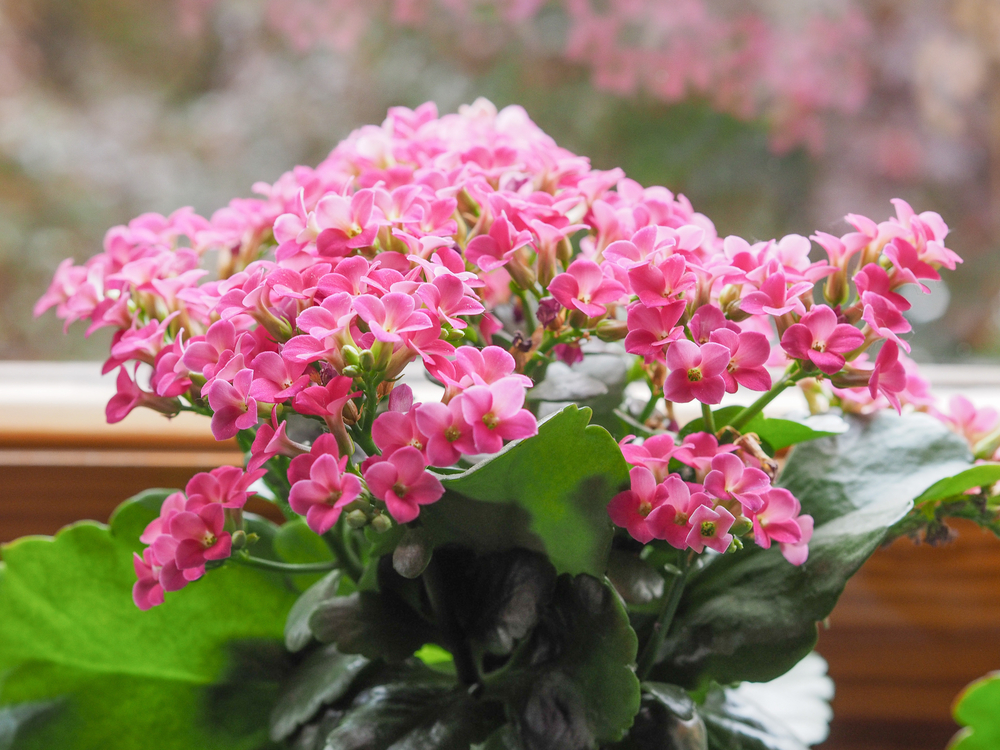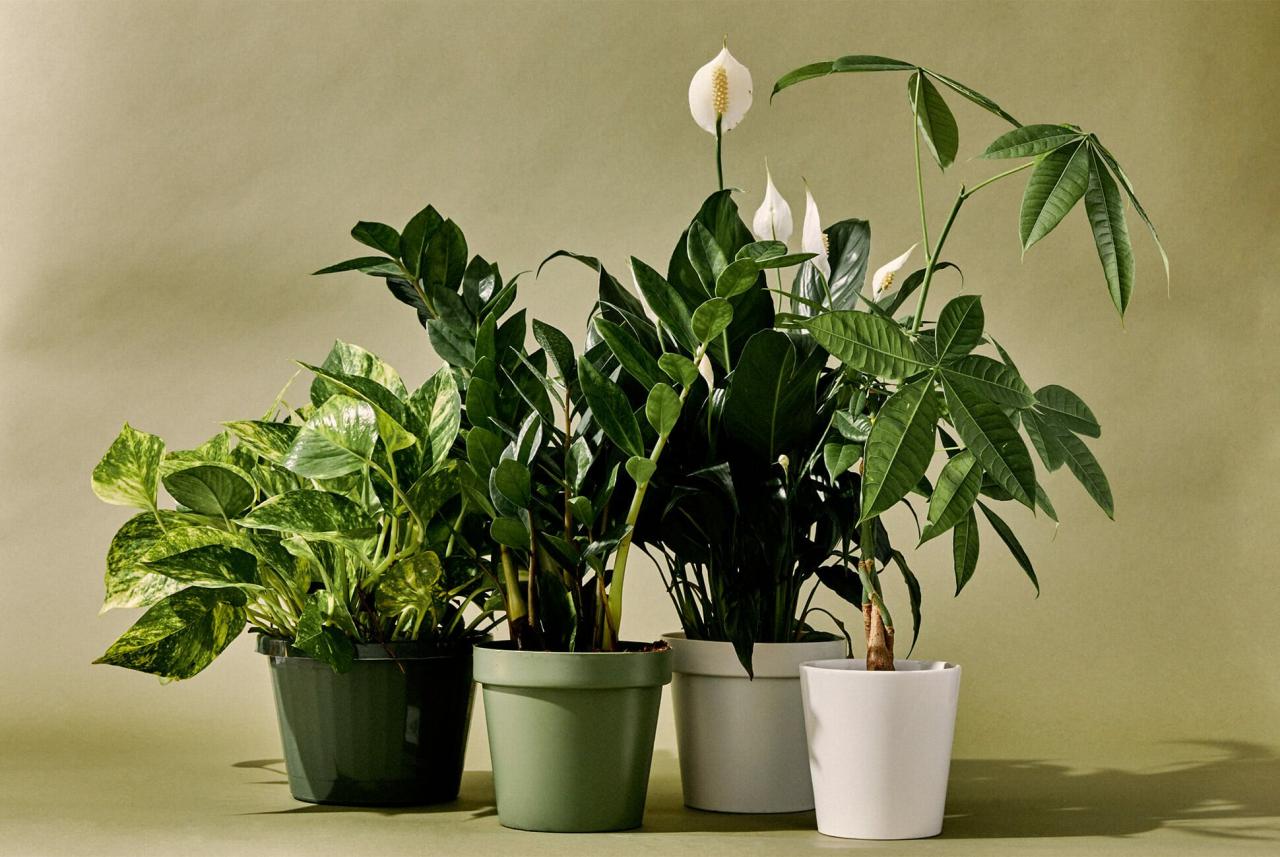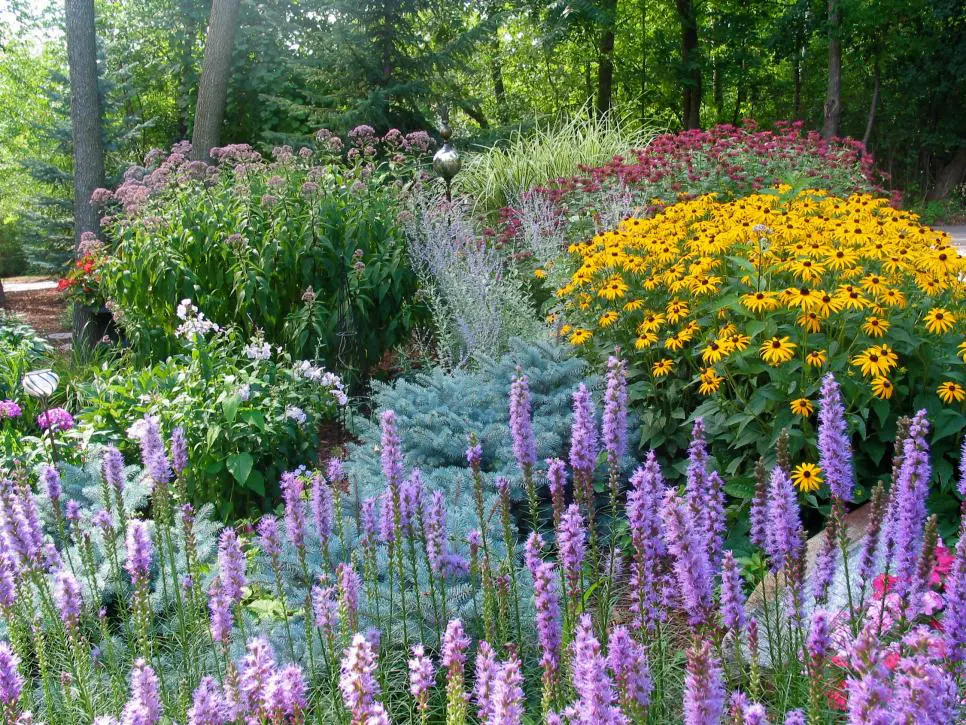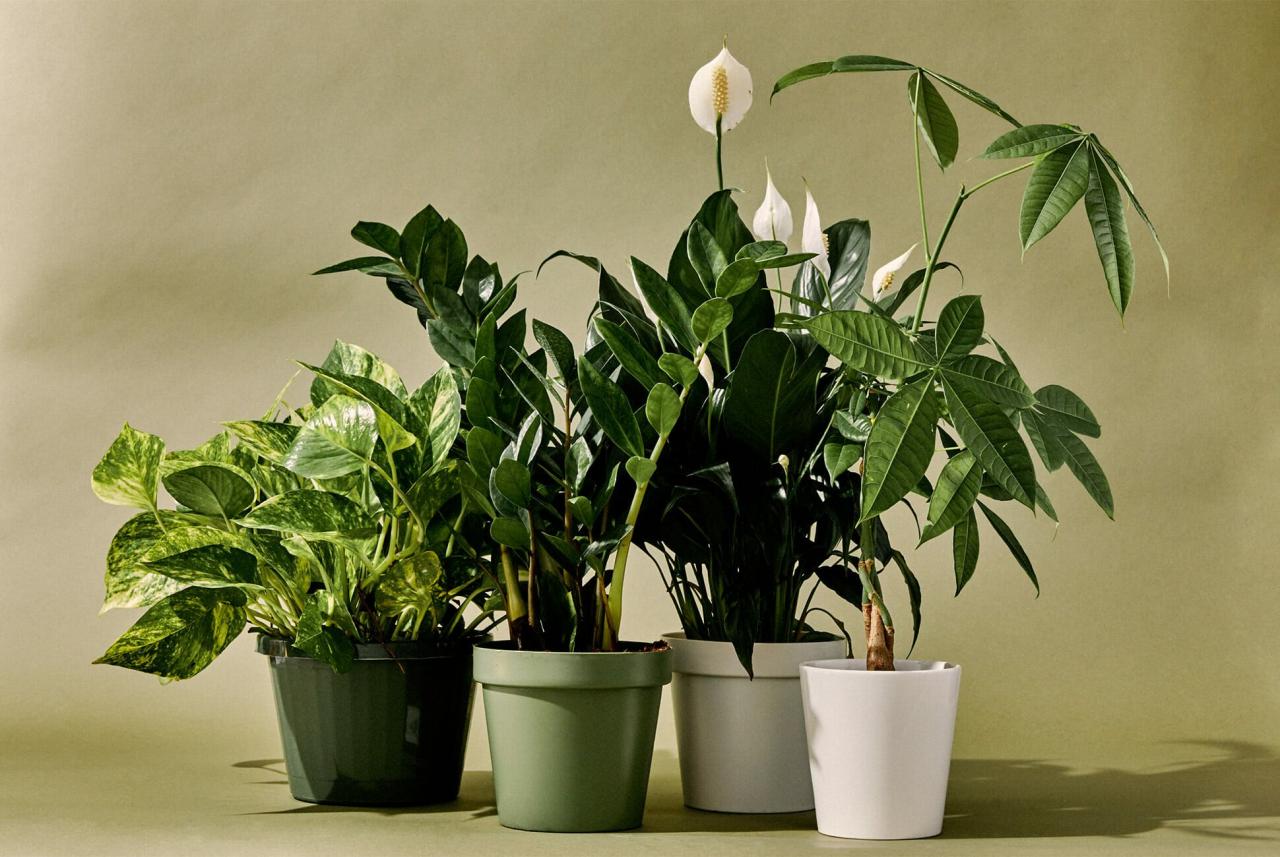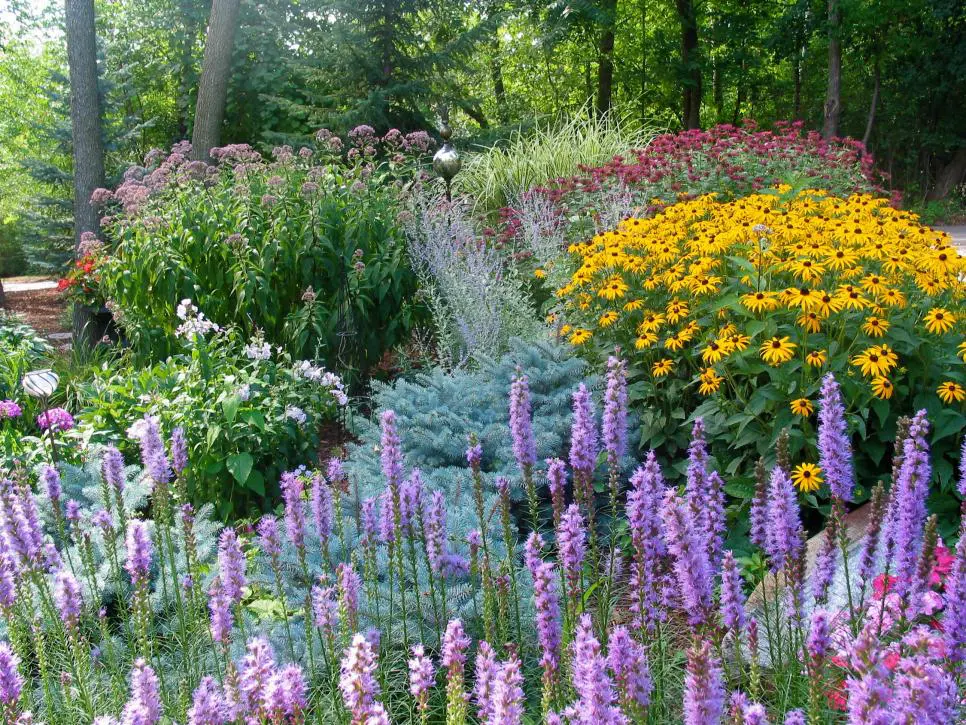Best flower plants for home garden? Transform your home into a vibrant oasis! This guide dives deep into selecting, planting, and caring for the perfect blooms, from easy-to-grow options to those that attract pollinators. Whether you’ve got a sprawling backyard, a cozy balcony, or a sunny patio, we’ll help you create the flower garden of your dreams, considering factors like sunlight, space, and your local climate.
Get ready to unleash your inner gardener!
We’ll explore a diverse range of flower varieties, offering detailed planting instructions and maintenance tips. Learn how to arrange your flowers for maximum visual impact, using color theory and varying heights and textures. Discover advanced techniques like propagation and companion planting to elevate your gardening game. From beginner-friendly choices to more challenging options, this comprehensive guide has something for everyone looking to bring the beauty of nature into their home.
Introduction to Home Gardening Flowers
Cultivating a home flower garden offers a wealth of rewards, extending beyond the simple aesthetic pleasure. The vibrant colors and delightful fragrances of blooming flowers can significantly boost your mood and create a tranquil, inviting atmosphere. Beyond the beauty, homegrown flowers can also attract beneficial pollinators like bees and butterflies, contributing to a healthier ecosystem in your immediate surroundings.
Furthermore, tending to a garden provides a fulfilling and therapeutic activity, connecting you with nature and offering a sense of accomplishment.Choosing the right flowers for your home garden requires careful consideration of several key factors. The success of your garden hinges on aligning your plant choices with your specific environment. Understanding your local climate, the amount of sunlight your garden receives, and the available space are all crucial steps in creating a thriving and beautiful flower bed.
Ignoring these factors can lead to disappointment, as plants may struggle to flourish under unsuitable conditions.
Factors to Consider When Choosing Flowers
Sunlight is a critical factor. Different flowers have varying sunlight requirements; some thrive in full sun, while others prefer partial shade or even full shade. Knowing the amount of sunlight your garden receives throughout the day is crucial for selecting appropriate flower varieties. For example, sunflowers require at least six hours of direct sunlight daily, whereas impatiens prefer shady locations.
Similarly, your climate plays a vital role. Hardy plants can withstand colder temperatures and frost, while tender plants require warmer conditions and may need protection during winter months. Matching plant hardiness to your local climate ensures optimal growth and prevents plant loss. Finally, space limitations should be considered. Before planting, measure your garden space to determine how many plants you can accommodate comfortably, allowing for proper spacing and growth.
Overcrowding can hinder growth and increase the risk of disease.
Types of Home Gardens
The type of home garden you have significantly impacts the types of flowers you can successfully grow. Backyard gardens, with their ample space, allow for a wider variety of plants and larger arrangements. Consider the design possibilities, from traditional flowerbeds to more contemporary designs incorporating pathways and seating areas. In contrast, balcony gardens require careful selection of compact and low-maintenance plants, often preferring container gardening.
Vertical gardening techniques, using hanging baskets or wall-mounted planters, are excellent space-saving solutions for balconies. Patio gardens offer a middle ground, allowing for larger containers and some ground planting, but still requiring careful consideration of space and sunlight exposure. Each type of garden presents unique opportunities and challenges, and choosing the right flowers for the available space is essential for a successful and aesthetically pleasing garden.
Easy-to-Grow Flower Plants
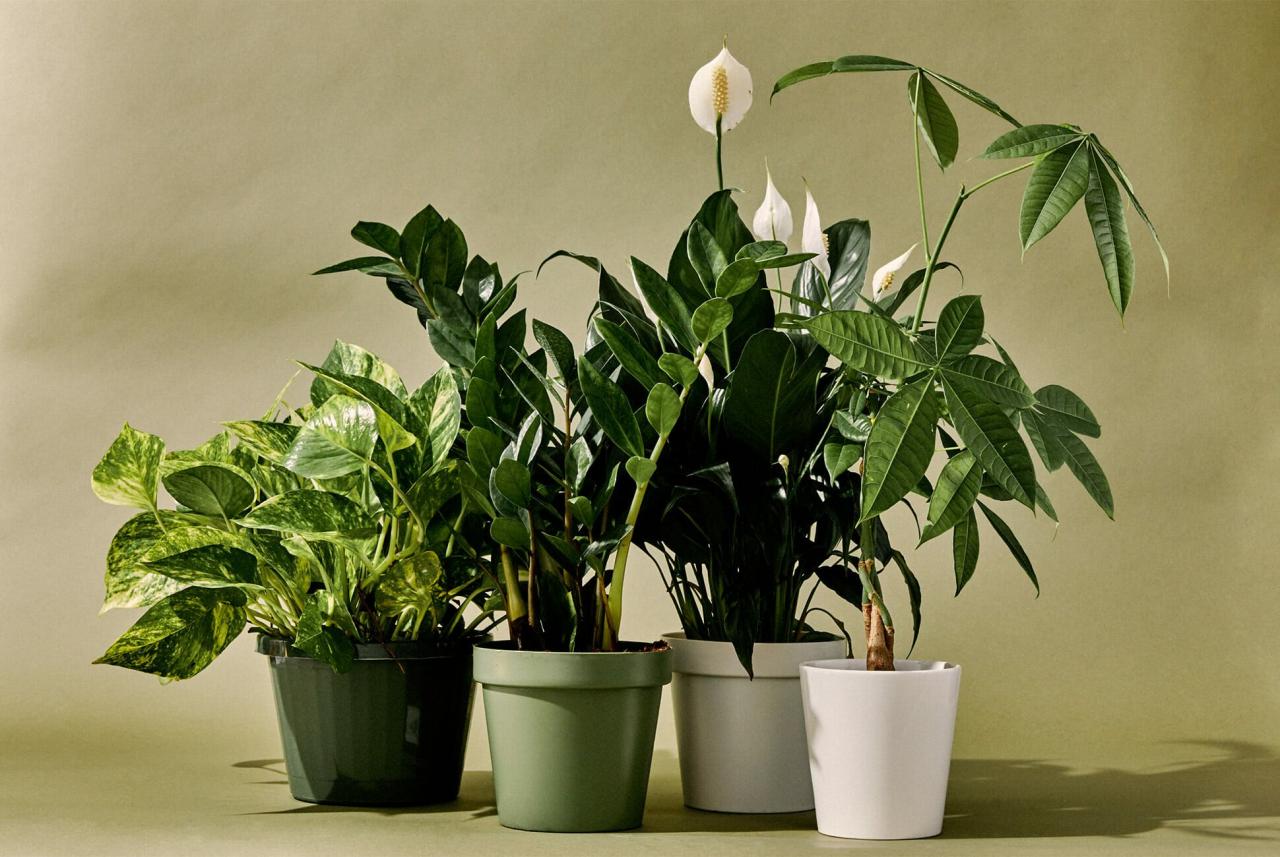
Embarking on your home gardening journey? Choosing the right flowers can make all the difference. These five easy-to-grow options are perfect for beginners, offering vibrant blooms with minimal effort. Their resilience ensures success, even for those with limited gardening experience. Let’s dive into the specifics of planting and care.
Sunflower Planting Guide
Sunflowers are synonymous with summer, their towering stature and cheerful yellow blooms brightening any garden. They thrive in full sun and well-drained soil. Plant seeds directly outdoors after the last frost, spacing them about 12-24 inches apart depending on the variety. Water regularly, especially during dry spells, ensuring the soil remains consistently moist but not waterlogged. Their impressive height might require staking, particularly in windy areas.
Zinnia Planting Guide
Zinnias are annuals known for their profusion of brightly colored flowers. They are remarkably low-maintenance and drought-tolerant once established. Plant seeds directly in the garden after the last frost, in a sunny location with well-drained soil. Water regularly, but allow the soil to dry slightly between waterings to prevent root rot. Deadheading (removing spent blooms) encourages more flowers.
Marigold Planting Guide
Marigolds are renowned for their vibrant colors and pest-repelling properties. These sun-loving annuals tolerate various soil conditions but prefer well-drained soil. Start seeds indoors 6-8 weeks before the last frost or direct sow outdoors after the danger of frost has passed. Water regularly, keeping the soil consistently moist. Their compact growth habit makes them ideal for borders or containers.
Petunia Planting Guide
Petunias, with their cascading blooms and diverse colors, are a popular choice for hanging baskets and containers. They prefer full sun to partial shade and well-drained soil. Start seeds indoors 8-10 weeks before the last frost or purchase transplants from a garden center. Water regularly, ensuring the soil doesn’t dry out completely. Regular fertilization encourages abundant blooms.
Nasturtium Planting Guide
Nasturtiums are unique, offering both edible flowers and leaves. They are remarkably adaptable, thriving in full sun or partial shade and tolerating various soil types. Sow seeds directly outdoors after the last frost, spacing them about 6-12 inches apart. Water regularly, but they are fairly drought-tolerant once established. Their trailing habit makes them excellent ground cover or for hanging baskets.
Easy Flower Plant Comparison
This table summarizes the bloom time, color variations, and maintenance needs of these five easy-to-grow flowers.
Choosing the best flower plants for your home garden can dramatically enhance its curb appeal. To truly maximize your outdoor space, consider upgrading other elements too, like checking out options for home-garden home-improvement doors-windows to complement your blossoming blooms. The right windows can even frame your floral displays beautifully, making your garden even more stunning.
| Flower | Bloom Time | Color Variations | Maintenance |
|---|---|---|---|
| Sunflower | Summer | Yellow, Orange, Red | Moderate (watering, staking) |
| Zinnia | Summer | Wide range, including red, orange, yellow, pink, white | Low (deadheading) |
| Marigold | Summer | Yellow, Orange, Red, Bicolor | Low (watering) |
| Petunia | Spring to Fall | Wide range, including purple, pink, red, white, bi-colors | Moderate (watering, fertilization) |
| Nasturtium | Summer to Fall | Orange, Yellow, Red | Low (drought-tolerant) |
Flower Plants for Specific Conditions
Choosing the right flowers for your home garden depends heavily on the amount of sunlight your space receives. Different flowers thrive under varying conditions, and understanding these preferences is crucial for a flourishing garden. Matching plants to their ideal light exposure ensures healthy growth and vibrant blooms.
Choosing the best flower plants for your home garden can dramatically boost your curb appeal. Think of it as creating your own personal sanctuary, much like staying in one of the world’s most stunning hotels; for instance, check out these best luxury hotels with stunning architecture and historical significance for inspiration. The same attention to detail you’d find in those luxurious spaces can be applied to your flowerbeds, resulting in a vibrant and inviting home.
So, get planting!
Sun-Loving Flowers
Sunlight is essential for many flowers to produce their vibrant colors and abundant blooms. These plants need at least six hours of direct sunlight daily. Choosing the right sun-loving flowers can transform a sunny spot into a breathtaking display.
- Zinnias: These cheerful annuals come in a dazzling array of colors and are incredibly easy to grow. Their vibrant blooms are a magnet for pollinators, adding life and activity to your garden. Zinnias are drought-tolerant once established, making them perfect for hot, sunny locations.
- Sunflowers: These iconic giants are a must-have for any sunny garden. Their towering stature and large, bright blooms create a striking visual impact. Sunflowers are relatively low-maintenance and provide a bountiful harvest of seeds in the autumn.
- Lantana: This flowering shrub boasts clusters of small, brightly colored blooms that attract butterflies and hummingbirds. Lantana is heat and drought-tolerant, making it ideal for full-sun locations. It’s a long-blooming plant, providing color throughout the summer and into the fall.
Shade-Tolerant Flowers
Not all areas of a home garden receive abundant sunlight. Partial shade, typically receiving four to six hours of sunlight per day, offers a unique opportunity to cultivate a variety of shade-loving flowers. These plants often have a different aesthetic, preferring dappled sunlight or the protection of taller plants.
- Hostas: Known for their striking foliage, hostas offer a wide range of colors and textures. While they produce flowers, it’s their leaves that truly steal the show. They thrive in shady conditions and require minimal maintenance.
- Impatiens: These cheerful annuals are known for their profuse blooms and tolerance of shade. They come in various colors and are excellent for filling in gaps in shady areas. Impatiens prefer consistently moist soil.
- Astilbe: These elegant perennials produce feathery plumes of flowers in shades of pink, red, and white. They prefer moist, shady conditions and add a touch of sophistication to a shaded garden.
Balcony Garden Design
A small balcony can be transformed into a vibrant garden with careful planning. By incorporating both sun-loving and shade-tolerant plants, you can maximize the space and enjoy a diverse array of blooms.Imagine a balcony with a south-facing wall receiving ample sunlight. Here, you could place pots of zinnias and sunflowers, their bright colors creating a cheerful atmosphere. On the north-facing side, or any area that receives less direct sun, you could plant hostas in larger containers for their striking foliage and shade-loving impatiens for a splash of color.
This arrangement ensures that every plant receives its optimal light conditions. Consider using vertical gardening techniques, such as hanging baskets, to maximize the limited space. For example, trailing lantana could cascade from a hanging basket, adding height and visual interest. Remember to choose pots with adequate drainage to prevent waterlogging.
Attracting Pollinators with Flowers
A thriving home garden isn’t just about beautiful blooms; it’s about creating a vibrant ecosystem. Attracting pollinators like bees and butterflies is crucial for both the health of your garden and the environment. These beneficial insects are essential for fruit and seed production, ensuring a bountiful harvest and contributing to biodiversity. By strategically choosing the right plants, you can transform your garden into a buzzing haven for these vital creatures.Pollinators play a vital role in the reproduction of many flowering plants, including those in your home garden.
Without them, many fruits, vegetables, and flowers wouldn’t be able to produce seeds or fruit, significantly impacting the garden’s yield and the overall health of the ecosystem. Attracting these beneficial insects is a simple yet impactful way to enhance your gardening experience and support local biodiversity.
Flower Types that Attract Bees and Butterflies
Three excellent choices for attracting bees and butterflies to your garden are sunflowers, lavender, and coneflowers. These plants offer a combination of visual and olfactory cues that are irresistible to pollinators. Their varied bloom times also ensure a continuous supply of nectar and pollen throughout the growing season.
Visual and Olfactory Characteristics Attractive to Pollinators
Sunflowers, with their large, bright yellow faces and abundant pollen, are highly attractive to bees. The open, disc-shaped flowers provide easy access to the pollen and nectar. Lavender’s purple blooms and strong, sweet fragrance attract both bees and butterflies. The tubular shape of the flowers is particularly appealing to butterflies, allowing them to easily access the nectar.
Coneflowers, boasting a variety of colors and a daisy-like structure, offer ample pollen and nectar for a range of pollinators. Their bright colors, often in shades of pink, purple, and orange, are highly visible to insects, guiding them to a readily available food source. The scent of these flowers, while subtle, adds another layer of attraction. The combination of vibrant colors, accessible pollen and nectar, and sometimes fragrant blooms makes these plants particularly appealing to bees and butterflies.
Flower Plant Care and Maintenance
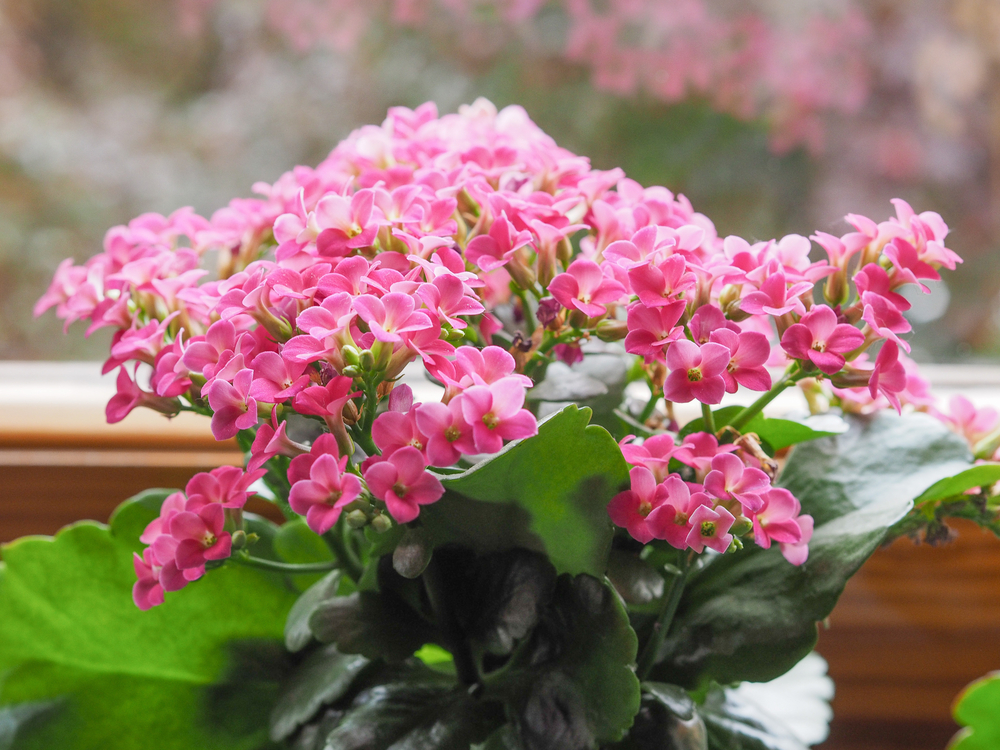
Keeping your home garden thriving requires consistent care and attention. Proper watering, fertilization, and pest control are crucial for healthy, vibrant blooms. Neglecting these aspects can lead to stunted growth, reduced flowering, and even plant death. Let’s explore the key elements of maintaining a flourishing flower garden.
Effective Watering Techniques
Consistent moisture is vital for flower plant health. Overwatering can lead to root rot, while underwatering causes wilting and stress. The best approach is to water deeply and less frequently, encouraging strong root development. Check the soil moisture before watering; if the top inch feels dry, it’s time to water. Water at the base of the plant to avoid wetting the foliage, which can encourage fungal diseases.
Consider using a watering can with a rose head for gentle, even distribution. For container plants, ensure adequate drainage to prevent waterlogging. The frequency of watering depends on factors like weather conditions, soil type, and plant type; some plants require more frequent watering than others.
Fertilizing for Abundant Blooms
Nutrients are essential for robust growth and plentiful blooms. Use a balanced, slow-release fertilizer specifically formulated for flowering plants. Follow the instructions on the packaging carefully, as over-fertilizing can be just as harmful as under-fertilizing. Apply fertilizer according to the plant’s growth stage; young plants might need less fertilizer than mature, actively blooming plants. Consider using organic fertilizers like compost or worm castings for a more environmentally friendly approach.
These provide a slow release of nutrients and improve soil health. Regularly testing your soil’s pH can also help you understand what nutrients are lacking and adjust your fertilization strategy accordingly.
Common Flower Plant Diseases and Pests and their Management, Best flower plants for home garden
Flower plants are susceptible to various diseases and pests. Common problems include powdery mildew (a fungal disease causing a white powdery coating on leaves), aphids (small, sap-sucking insects), and spider mites (tiny arachnids that cause stippling and webbing on leaves). Preventative measures include proper spacing of plants to improve air circulation, regularly inspecting plants for signs of infestation, and maintaining a healthy soil environment.
Organic treatment options include neem oil (a natural insecticide effective against many pests), insecticidal soap (for soft-bodied insects), and fungicides made from baking soda and water (for fungal diseases). Always identify the specific pest or disease before applying any treatment. Early detection and prompt action are crucial for effective pest and disease management. For severe infestations, consulting a gardening expert may be necessary.
Creating Visual Appeal with Flower Arrangements: Best Flower Plants For Home Garden
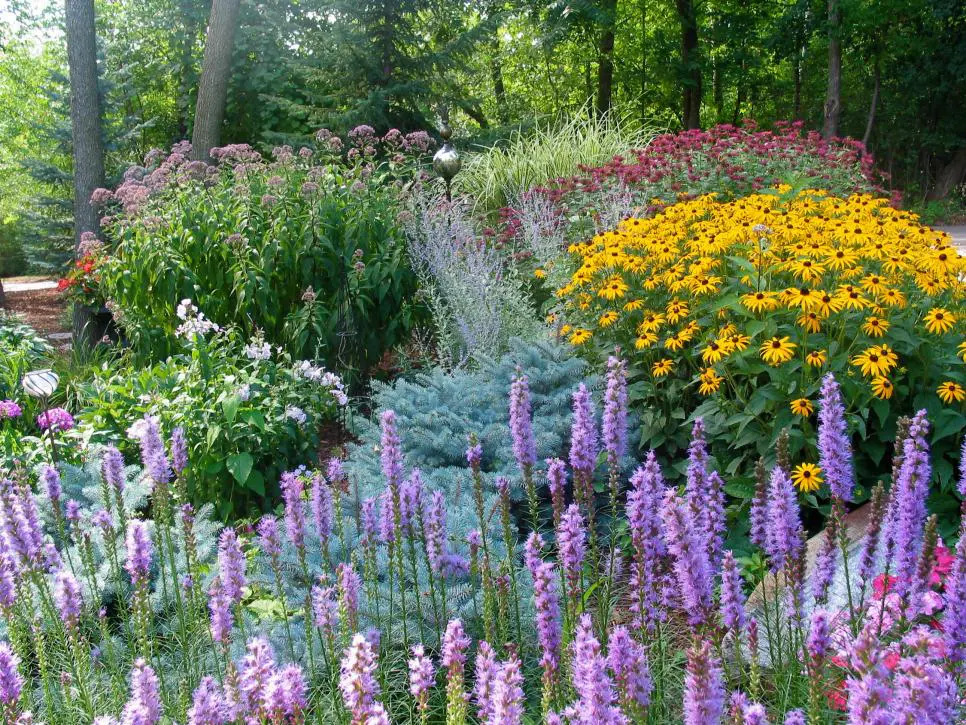
Transforming your home garden into a vibrant, eye-catching spectacle goes beyond simply planting flowers. Strategic planning and understanding basic design principles can elevate your garden from pretty to breathtaking. This section explores how to arrange your flowers for maximum visual impact, turning your green space into a personal masterpiece.Creating a visually stunning flower garden involves more than just planting pretty flowers; it’s about orchestrating a symphony of color, texture, and height.
By understanding and applying a few simple design principles, you can create a garden that’s both harmonious and exciting.
Color Theory in Flower Garden Design
Color theory is the key to creating a harmonious and vibrant flower garden. Understanding the color wheel—with its primary, secondary, and tertiary colors—allows you to create various color schemes that evoke different moods and feelings. For example, a monochromatic scheme using varying shades of blue creates a calming effect, while a complementary scheme using contrasting colors like orange and blue provides a bold and energetic feel.
Analogous color schemes, using colors adjacent on the color wheel (like yellow, orange, and red), offer a more natural and cohesive look. Consider the impact of each color choice; warm colors like red and yellow tend to advance, while cool colors like blue and purple recede. A well-balanced garden will thoughtfully incorporate both. For instance, a border of vibrant red geraniums could be beautifully offset by a backdrop of cool-toned lavender.
Incorporating Flower Heights and Textures
Achieving a layered and dynamic look requires thoughtful consideration of flower heights and textures. Tall flowers, such as sunflowers or delphiniums, act as focal points, drawing the eye upward. Mid-height flowers, like coneflowers or daylilies, fill in the gaps and add visual interest. Low-growing plants, such as alyssum or creeping phlox, create a ground cover and soften the edges.
Similarly, incorporating a variety of textures—smooth petals, feathery foliage, spiky leaves—adds depth and complexity. Imagine a garden bed with tall, stately hollyhocks standing proudly behind a swathe of fluffy lamb’s ear, with delicate blue forget-me-nots nestled at their base. This layered approach creates visual rhythm and interest, preventing the garden from appearing flat or monotonous.
Tips for Visually Appealing Flower Arrangements
Careful planning is crucial for maximizing the visual appeal of your flower arrangements. Consider these tips:
Before diving into planting, sketch a rough plan of your garden beds. This allows you to visualize the arrangement and ensure a balanced distribution of colors, heights, and textures. Consider the overall style you want to achieve – formal, informal, cottage garden, etc. – and choose plants that complement that style. Remember to account for the mature size of each plant to prevent overcrowding.
- Mass Planting: Grouping plants of the same type together creates a strong visual impact and emphasizes their color and form. A large patch of purple salvia, for instance, can be stunning.
- Repetition: Repeating certain colors or plant types throughout the garden creates a sense of unity and coherence. Repeating a specific flower color in different garden beds can tie the whole space together.
- Focal Points: Use strategically placed taller plants or unique features to draw the eye and create focal points within the garden. A striking ornamental grass or a vibrant flowering shrub can serve as a perfect focal point.
- Negative Space: Don’t be afraid to leave some empty space. This allows the eye to rest and prevents the garden from feeling cluttered. Strategically placed bare patches can highlight the beauty of your carefully chosen plants.
Advanced Techniques for Flower Gardening
Taking your flower gardening to the next level involves mastering propagation techniques and understanding how to optimize your garden’s layout and structure. These advanced methods will not only increase your flower yield but also enhance the overall beauty and health of your garden. Let’s explore some key strategies.
Flower Propagation from Seeds and Cuttings
Successfully propagating flowers from seeds or cuttings is a rewarding way to expand your garden and share your favorite blooms. Seed propagation requires patience and attention to detail, from choosing high-quality seeds to providing the right conditions for germination. Cuttings, on the other hand, offer a faster method for replicating existing plants, preserving their unique characteristics.
Seed propagation involves sowing seeds in suitable soil, ensuring proper moisture and light levels. Different flowers have varying germination requirements; some thrive in darkness, while others need light to sprout. Careful monitoring for germination and subsequent seedling care are crucial for success. For example, starting seeds indoors in seed trays allows for controlled conditions before transplanting outdoors.
Cuttings, conversely, involve taking a stem or root section from a mature plant and encouraging root development. This is often achieved by placing the cutting in water or a rooting medium, such as perlite or vermiculite. Hormone rooting powders can significantly improve success rates. Softwood cuttings (taken from new growth) are often preferred for many flowering plants.
For example, taking a 4-6 inch cutting from a healthy geranium and placing it in a glass of water, ensuring the leaves are above the water line, is a simple way to propagate.
Companion Planting in Flower Gardens
Companion planting involves strategically positioning different plant species together to enhance growth, deter pests, and attract beneficial insects. Careful planning maximizes the benefits of each plant’s interaction.
Certain plant combinations can improve soil health, deter pests, or attract pollinators. For instance, marigolds are known to repel nematodes, while basil can help deter aphids from nearby tomato plants. This symbiotic relationship creates a more resilient and productive garden. Planning your garden with these interactions in mind will create a healthier and more beautiful space. A well-designed companion planting scheme can reduce the need for pesticides and fertilizers, creating a more environmentally friendly garden.
Creating a Successful Vertical Garden
Vertical gardening utilizes climbing or trailing flowers to maximize space and create stunning visual effects. This technique is particularly useful for small gardens or areas with limited horizontal space.
Choosing the right climbing or trailing plants is crucial for success. Consider factors such as the plant’s mature size, sun exposure requirements, and support needs. Providing adequate support structures, such as trellises, obelisks, or walls, is essential. Regular pruning and maintenance are necessary to keep the plants healthy and prevent overcrowding. Examples of excellent vertical garden plants include clematis, honeysuckle, and morning glories, each with its own unique characteristics and climbing habits.
Proper planning, including choosing plants with appropriate growth habits and providing sturdy support structures, is essential for a thriving vertical garden.
